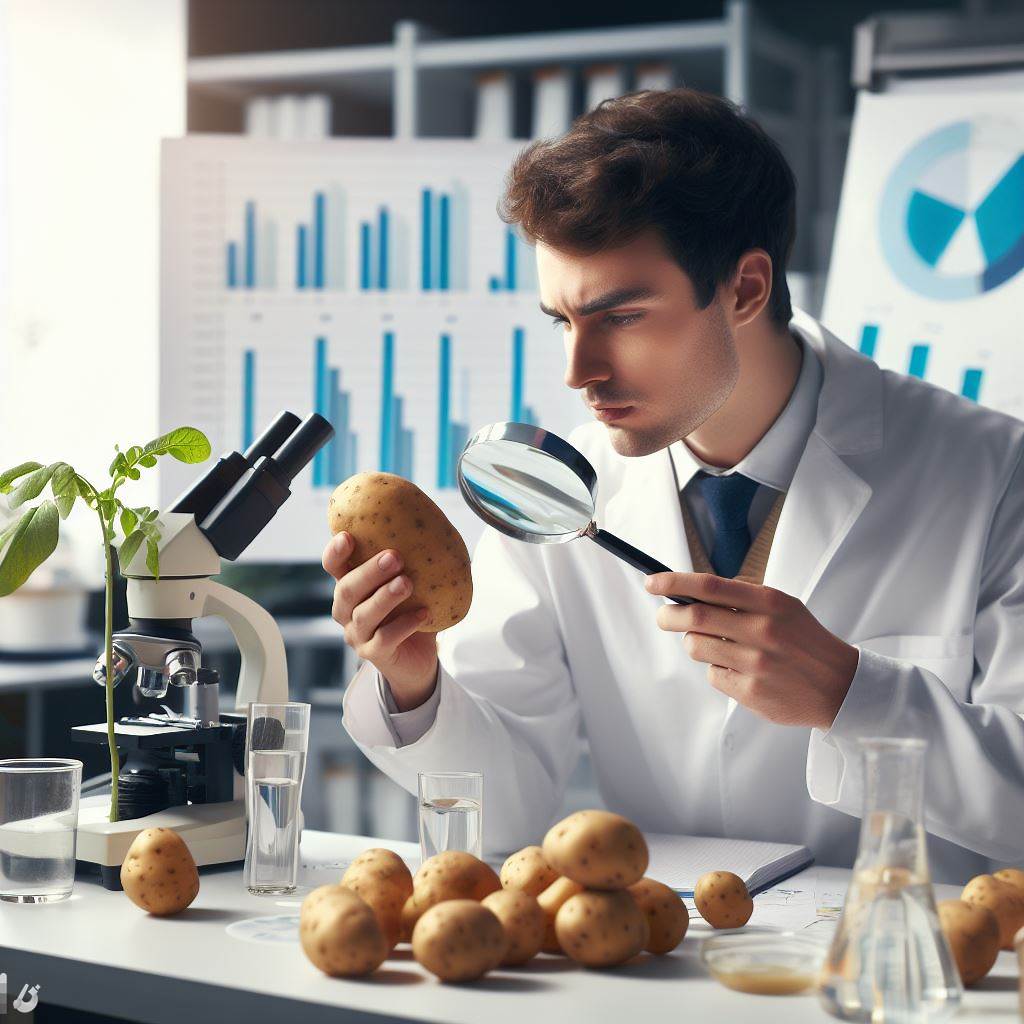Introduction
Let’s explore irrigation methods for rice: Maximizing yield.
Effective irrigation methods play a crucial role in maximizing yield for rice farming.
Irrigation is vital for rice farming as it ensures a consistent water supply throughout the growing season.
The main objective of using efficient irrigation methods is to optimize rice production and achieve higher yields.
Proper water management enhances nutrient absorption and promotes healthier plant growth.
By providing the right amount of water at the right time, farmers can prevent water stress and yield loss.
Effective irrigation techniques improve the overall productivity of rice fields, leading to increased profits.
Traditional methods such as flooding and overhead sprinklers have drawbacks and may result in water wastage.
Modern techniques like drip irrigation and alternate wetting and drying are more water-efficient and effective.
Drip irrigation ensures precise water delivery, allowing plants to utilize water effectively without excess runoff.
Alternate wetting and drying method involves periodically drying out the field between irrigation events to conserve water.
Scientific monitoring and analysis help farmers determine the optimal irrigation schedule and minimize water usage.
In fact, effective irrigation methods are essential for maximizing rice yield, minimizing water consumption, and increasing profitability for farmers.
Traditional Flood Method
The traditional flood method is the most common and oldest method of irrigating rice crops.
Explanation of the flood method
In this method, fields are flooded with water to a certain depth that covers the rice plants.
Transform Your Agribusiness
Unlock your farm's potential with expert advice tailored to your needs. Get actionable steps that drive real results.
Get StartedPros and cons of using flood method
Pros
- The flood method allows for the control of weeds as they are submerged underwater.
- It creates an ideal environment for the growth of rice plants.
- It helps in managing pests by drowning them or limiting their movement.
Cons
- High water consumption is a major drawback of the flood method.
- Weeds can still grow in the waterlogged fields and require additional management efforts.
- Nutrient loss can occur, especially if excessive water is used or if the soil is poorly managed.
High water consumption
The flood method requires a significant amount of water, often leading to water scarcity in drought-prone regions.
Weeds and pest management
While the flood method helps control weeds and pests to some extent, it still requires additional management practices.
Nutrient loss
Continuous flooding can cause the leaching of nutrients from the soil, leading to decreased fertility and lower yields.
Alternative irrigation methods to overcome these challenges
To overcome these challenges, farmers and researchers have developed alternative irrigation methods:
Alternate Wetting and Drying (AWD) technique
In this method, water is used sparingly by periodically alternating between flooded and non-flooded conditions.
This reduces water consumption significantly.
System of Rice Intensification (SRI)
SRI promotes healthier root growth and reduces water usage by transplanting younger and fewer seedlings, maintaining soil moisture through alternate wetting and drying, and utilizing organic matter to improve soil fertility.
Drip Irrigation
Drip irrigation delivers water directly to the roots of individual plants, minimizing water wastage and reducing weed growth.
However, it requires careful planning and higher upfront costs.
Sprinkler Irrigation
Sprinklers distribute water evenly over the fields, reducing the amount of water needed while minimizing weed growth. However, it can be less effective in maintaining soil moisture.
Subsurface Irrigation
This method involves delivering water directly to the root zone through buried perforated pipes, reducing evaporation and weed growth.
It requires proper installation and maintenance.
In essence, while the traditional flood method has its advantages, such as weed and pest control, it also has drawbacks like high water consumption and nutrient loss.
With the development of alternative irrigation methods, rice farmers can maximize their yield while minimizing resource usage and environmental impacts.
It is crucial for farmers to explore and adopt these innovative techniques to ensure sustainable rice production in the face of growing challenges.
Read: Automated Tractors: The Future of Ploughing
Alternate Wetting and Drying (AWD) Method
Overview of AWD method
The Alternate Wetting and Drying (AWD) method is an irrigation technique that involves periodically drying the rice field rather than keeping it continuously submerged.
This approach helps in maximizing rice crop yield while optimizing water usage.
Benefits of using AWD method
Reduced water consumption
By alternating between wetting and drying, farmers can save water by up to 30% compared to conventional continuous flooding.
This method promotes water conservation, especially in regions where water scarcity is a concern.
Weed and pest control
AWD method contributes to better weed and pest management by reducing the growth and survival of unwanted plant species and insects.
The periodic drying of fields interrupts the life cycle of pests, minimizing their impact on the rice crop.
Nutrient retention
When the field is partially dried, decaying organic matter releases nutrients, making them more available to the rice plants.
This method enhances nutrient uptake efficiency, leading to improved crop development and yield.
Showcase Your Farming Business
Publish your professional farming services profile on our blog for a one-time fee of $200 and reach a dedicated audience of farmers and agribusiness owners.
Publish Your ProfileSteps to implement AWD method
Prepare the field
Level the field properly and ensure a smooth surface to allow uniform water distribution during wetting phases.
Repair any leaks in the irrigation system and maintain adequate drainage outlets.
Monitor soil moisture
Regularly assess soil moisture levels using appropriate techniques like soil tensiometers or electronic moisture sensors.
Over time, farmers will develop an understanding of the ideal moisture content for rice growth.
Apply water
Almost saturate the field with water, ensuring proper soil wetting to encourage seed germination.
Once the crop is well-established and at a specific growth stage, allow the water to recede gradually.
Monitor field for drying
Observe the field and look for signs of drying, such as cracking surface or a change in color.
When these indicators become prominent, it is time to refill the field with water.
Repeat the cycle
Continue the alternating wetting and drying cycle throughout the rice growing season.
Regularly assess the soil moisture and adjust the irrigation practices accordingly.
In brief, the Alternate Wetting and Drying (AWD) method offers significant advantages to rice farmers.
It helps conserve water, manage weed and pest issues, and improve nutrient uptake.
By following the steps mentioned, farmers can successfully implement AWD and maximize their rice yield.
Read: Pest Control in Corn Fields: Effective Strategies

Precision Irrigation
Introduction to precision irrigation
Precision irrigation is an advanced farming technique that optimizes water and nutrient delivery to enhance growth and yield.
Using precision irrigation techniques in rice farming can significantly enhance crop productivity and sustainability.
With optimal water and nutrient delivery, rice plants can thrive, leading to increased yields and profitability.
Benefits of precision irrigation in rice farming
Optimal water and nutrient delivery
One of the key advantages of precision irrigation is its ability to minimize water and nutrient wastage.
By precisely delivering water and nutrients directly to the root zone, farmers can avoid inefficient practices such as surface runoff and excessive leaching.
This not only saves water but also reduces the amount of fertilizers needed, resulting in cost savings and environmental benefits.
Enhanced growth and yield
Precision irrigation promotes enhanced growth and yield in rice plants.
By providing the right amount of water and nutrients at each growth stage, farmers can ensure that the plants receive optimal conditions for development.
This leads to improved root systems, healthier foliage, and increased yield potential.
Cost-effective and sustainable
Precision irrigation is also a cost-effective and sustainable approach to rice farming.
By reducing water and fertilizer usage, farmers can lower production costs and improve profitability.
Efficient water and nutrient management contribute to environmental sustainability by minimizing groundwater depletion and reducing nutrient runoff into water bodies.
Various techniques of precision irrigation
Drip irrigation
Drip irrigation is one of the most commonly used precision irrigation techniques in rice farming.
It involves the use of small tubes or pipes to deliver water directly to the root zone of each rice plant.
This method allows for precise control over water application rates, minimizing evaporation and ensuring efficient water use.
Sprinkler irrigation
Sprinkler irrigation is another effective technique for rice farming.
It utilizes overhead sprinklers that distribute water evenly over the fields.
This mimics natural rainfall and provides uniform water coverage, promoting consistent crop growth and reducing water consumption.
Subsurface irrigation
Subsurface irrigation, although less commonly used in rice farming, can also be an effective precision irrigation technique.
It involves placing water directly below the soil surface, allowing rice plants to absorb water efficiently through their roots.
This method minimizes water loss due to evaporation and reduces weed growth.
In a nutshell, precision irrigation offers numerous benefits for rice farming, including optimal water and nutrient delivery, enhanced growth and yield, and cost-effectiveness.
Various techniques such as drip irrigation, sprinkler irrigation, and subsurface irrigation can be utilized to maximize these advantages.
By adopting precision irrigation methods, rice farmers can optimize their yields while minimizing environmental impact.
Read: Tomato Cultivation: Tips for a Healthy Crop
Evaluating and Choosing the Right Irrigation Method
When it comes to rice production, selecting the appropriate irrigation method is crucial in maximizing yield and ensuring optimal growth.
Showcase Your Farming Business
Publish your professional farming services profile on our blog for a one-time fee of $200 and reach a dedicated audience of farmers and agribusiness owners.
Publish Your ProfileVarious factors need to be taken into consideration in order to make an informed decision.
Factors to Consider when Selecting an Irrigation Method
- Soil Type and Condition: The type and condition of the soil can greatly impact the effectiveness of an irrigation system. The ability of the soil to retain water, its drainage capacity, and its nutrient-holding capacity are all important factors to consider.
- Water Availability and Quality: The availability and quality of water play a significant role in determining the most suitable irrigation method. Factors such as the source of water, its availability throughout the growing season, and its salinity must be evaluated.
- Crop Stage and Growth Requirements: The growth stage of the rice crop and its specific water needs at different stages should be considered. Irrigation methods that can cater to the varying demands of the crop are essential for maximizing yield.
- Farming Resources and Infrastructure: The availability of resources and infrastructure on the farm must be taken into account. Factors such as labor, energy requirements, equipment availability, and capital investment need to be weighed when choosing an irrigation method.
Consultation with Agricultural Experts
Seeking advice from agricultural experts can be invaluable in making the right decision regarding irrigation methods.
Their knowledge and experience can provide valuable insights into the local conditions, best practices, and modern advancements in irrigation technologies.
Consulting with agricultural experts offers the opportunity to assess the specific requirements of the rice crop, evaluate the available irrigation options, and understand the potential benefits and drawbacks of each method.
Experts can also provide guidance on the selection process, considering various factors such as the local climate, weather patterns, and the expertise of the farmers themselves.
Their input can help in identifying potential risks and challenges associated with specific irrigation methods, empowering farmers to make informed decisions.
In review, selecting the appropriate irrigation method for rice cultivation is a critical decision that can directly impact the yield and success of the crop.
Factors such as soil type, water availability, crop stage, and farming resources should all be considered.
Engaging in consultation with agricultural experts can provide valuable guidance and insights, ensuring the choice of the most suitable irrigation method for maximizing yield.
Read: Best Soil Types for Growing Wheat: An Overview
Uncover the Details: Crops for High-Yield Harvests
Conclusion
We have discussed several irrigation methods that can be used to maximize the yield of rice production.
These methods include flood irrigation, sprinkler irrigation, and drip irrigation.
It has been emphasized throughout this section that proper irrigation techniques are crucial for enhancing rice farming efficiency and ultimately increasing yield.
By implementing appropriate irrigation methods, farmers can ensure that water is distributed efficiently and evenly to the rice fields, which promotes optimal growth and development of the crop.
The significance of maximizing yield through proper irrigation cannot be overstated.
With the increasing demand for rice globally, it is essential to utilize irrigation methods that can help meet this demand.
Furthermore, by using efficient irrigation practices, farmers can conserve water resources and reduce water wastage, contributing to sustainable and environmentally friendly farming practices.
Rice farmers are encouraged to adopt suitable irrigation methods to enhance their farming efficiency and ultimately increase their yield.
By doing so, they can contribute to meeting the global demand for rice while promoting sustainable agriculture.




